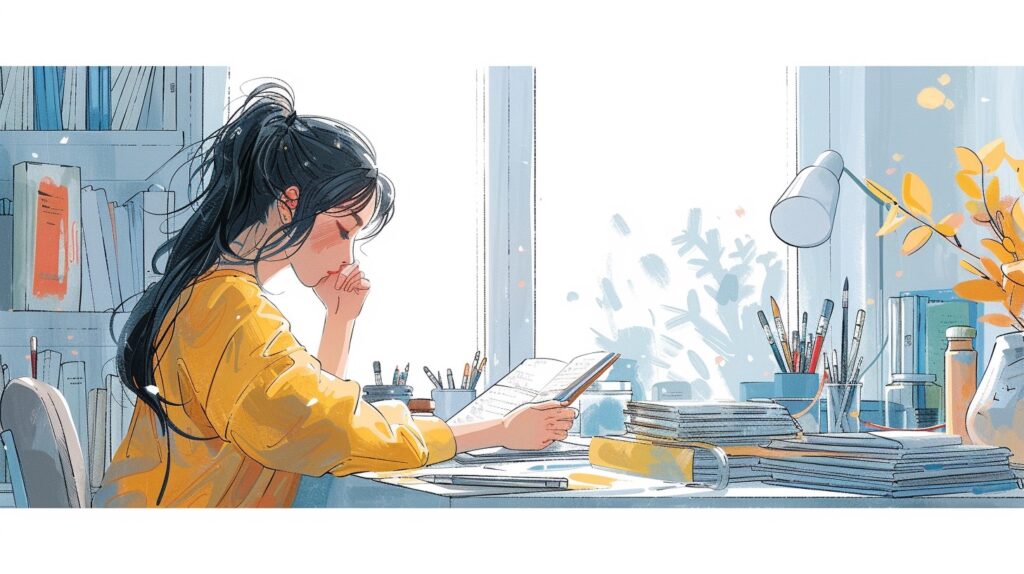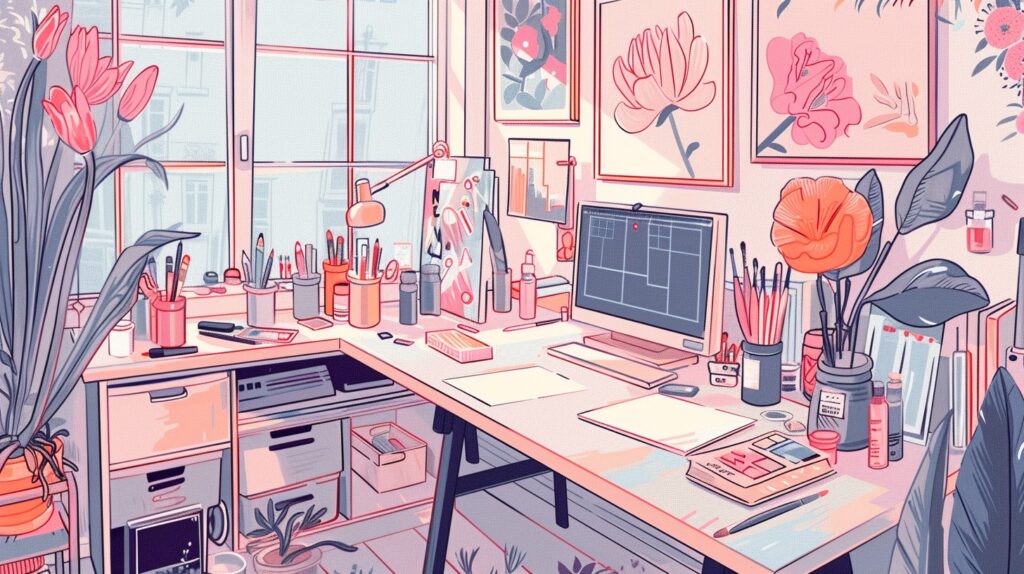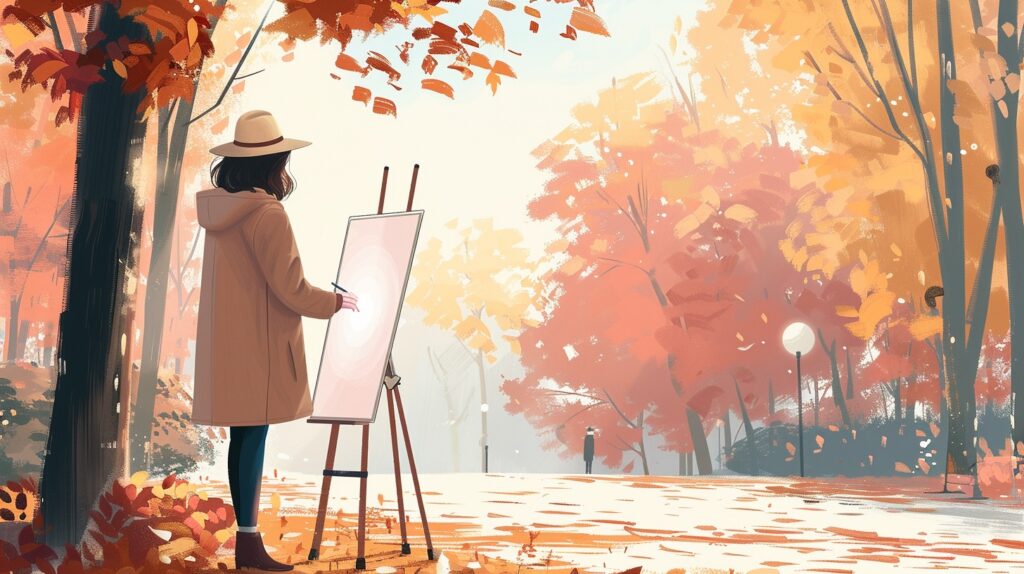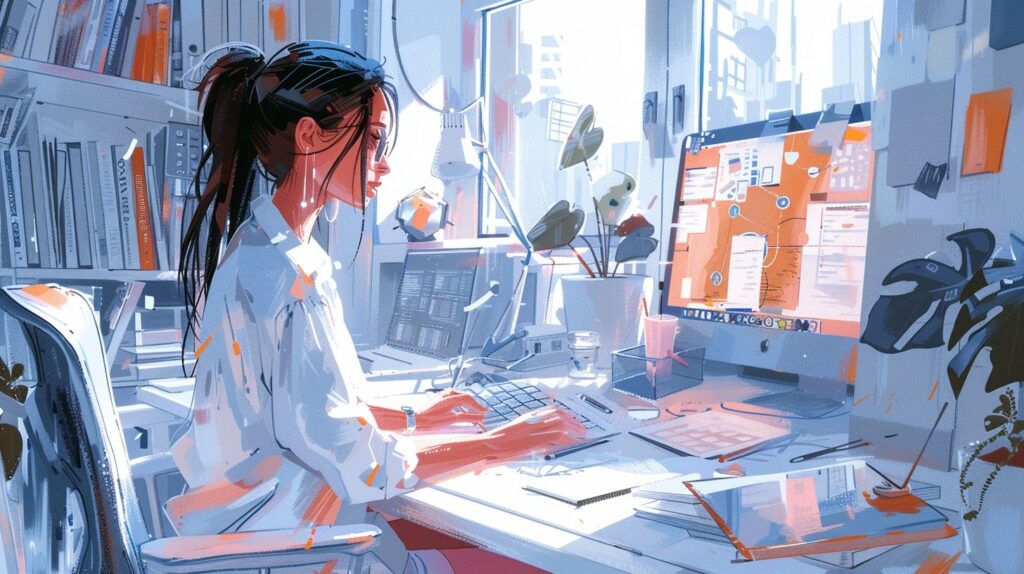When it comes to selling your artwork, one of the trickiest aspects can be determining how to price your artwork.
Getting the price right is crucial as it not only affects your potential earnings but also communicates the value of your work to potential buyers.
I’m going to show you how I approach pricing the things that I create. It’s a little more complicated than simply looking at the competition and making a guess.
The Importance of Fairly Pricing Your Art
As an artist, you’ve put thought, time, and passion into creating your art. Each piece represents your unique vision and skill, and this should be reflected in its price.
It doesn’t matter if you’re talking enamel pins, stuffed animals, or actual paintings on a canvas, your creations are your art.
When you price your artwork fairly, you’re not only ensuring you’re compensated appropriately for your efforts but also setting a benchmark that communicates the value of your work in the market.
Pricing your artwork too low can undervalue your work and make it harder to raise prices in the future. On the other hand, pricing too high can deter potential buyers and make it harder to make sales.
A fair price will not only cover your costs but also allow you to make a profit, while positioning your work appropriately in the market.

Common Mistakes in Artwork Pricing
While learning how to price your artwork, it’s easy to make mistakes. Here are a few common pitfalls to avoid:
- Pricing Based on Emotion: While your connection to your work is important, your emotional attachment shouldn’t be the primary factor in pricing. Instead, aim to use a more objective method that takes into account your costs, the market, and your experience level.
- Inconsistency in Pricing: Consistency is key in pricing. Similar artworks should have similar prices. Inconsistent pricing can confuse potential buyers and undermine your credibility.
- Ignoring the Market: Knowing your market and understanding what similar artworks are selling for is crucial. If you ignore the market, you risk setting prices that are either too high or too low.
- Neglecting to Factor in All Costs: When pricing your work, be sure to include all costs involved, including materials, time, overheads, and even the commission you’ll pay to your art selling websites (if you’re doing larger pieces).
By understanding and avoiding these common mistakes, you can set prices that accurately reflect the value of your work and enhance your prospects of making successful art sales online.
As you continue to learn and grow as an artist, your pricing strategies will also evolve, helping you to build a sustainable and profitable art business.
And that’s something that is important to remember. Your prices don’t have to be set in stone. You can adjust them as you get a better understanding of your market.

How to Price Your Artwork: Understanding the Cost of Your Art
To accurately determine how to price your artwork, it’s vital to understand all the costs involved in creating it. These costs can be broken down into three main categories: material costs, time investment, and overhead expenses.
Material Costs
The first step in calculating your art cost is to determine the cost of the materials used. This includes all the art supplies such as paints, brushes, canvas, and any other materials used in the creation of your artwork.
For example, if you spent $50 on paints, $20 on canvas, and $10 on brushes, your total material cost would be $80.
| Material | Cost |
|---|---|
| Paints | $50 |
| Canvas | $20 |
| Brushes | $10 |
| Total | $80 |
Remember, it’s not just about the cost of materials used in a single piece of artwork, but also considering the lifespan of these materials. If a tube of paint lasts for five paintings, the cost per painting is the total cost divided by five.
Time Investment
Next, consider the time you’ve invested in creating your artwork. This should include not only the actual painting time but also the time spent on concept development, research, and any other preparatory work.
Determine a reasonable hourly wage for yourself, then multiply this by the total number of hours spent on the artwork. For example, if you decide to pay yourself $20 per hour and you spent 10 hours on a painting, your time investment cost would be $200.
| Wage per Hour | Hours Spent | Total Cost |
|---|---|---|
| $20 | 10 | $200 |
Overhead Expenses
Lastly, don’t forget to factor in overhead expenses. These are the costs that are not directly tied to a single piece of artwork but are part of the overall running of your art business.
Overhead expenses can include rent for your studio, utility bills, marketing expenses, fees for selling on online art marketplaces, and more.
To calculate the overhead cost per artwork, add up your total monthly overhead expenses and divide by the number of artworks you create in a month. For instance, if your overhead expenses are $200 a month and you create 10 artworks, your overhead cost per artwork would be $20.
| Overhead Expenses | Artworks per Month | Cost per Artwork |
|---|---|---|
| $200 | 10 | $20 |
By understanding these costs, you can ensure you’re covering your expenses and getting paid fairly for your time and effort when you price your artwork. This is a crucial step in making your art business sustainable and profitable.

Evaluating the Market
Part of determining how to price your artwork involves understanding the current art market. This includes researching comparable artists and keeping up-to-date with market trends.
Researching Comparable Artists
Identifying artists who create similar work to yours can give you an idea of what potential buyers might be willing to pay for your art. Look for artists who share similar styles, themes, or mediums and take note of their pricing strategies.
You can do this research by visiting various online art marketplaces, galleries, and artists’ websites. Don’t just limit your research to one platform.
Explore a variety of online platforms to get a comprehensive view of the market. For instance, you might want to check out selling art on Etsy, selling art on eBay, and selling art on Instagram to understand a range of price points.
Consider creating a comparison chart to help you organize your findings. This can be a simple table listing the artist’s name, the type of artwork they create, and their average price range.
| Comparable Artist | Artwork Type | Price Range |
|---|---|---|
| Artist A | Oil Painting | $300 – $500 |
| Artist B | Digital Art | $50 – $100 |
| Artist C | Sculpture | $500 – $1000 |
Remember, your goal is not to copy another artist’s pricing structure, but to use their prices as a benchmark to guide your own pricing decisions.
Understanding Market Trends
Keeping a pulse on the art market can help you make informed pricing decisions. Market trends can fluctuate based on a variety of factors, including economic conditions, buyer preferences, and even cultural shifts.
Online platforms and art news websites often publish articles and reports on current market trends. Look for information about the types of artwork that are in demand, emerging art forms, and how pricing trends are shifting.
For example, you might find that there’s a growing demand for digital art, or that buyers are willing to pay premium prices for eco-friendly art materials.
While you shouldn’t change your art style or materials to chase trends, being aware of what’s happening in the market can help you make smart pricing decisions.
For example, if you know that there’s a high demand for the type of art you create, you might be able to price your work a bit higher.
Evaluating the market requires ongoing effort. Make it a habit to regularly research comparable artists and stay updated on market trends. This will not only help you price your artwork effectively but also inform your art marketing strategies and choices about where to sell your artwork.

Determining Your Pricing Formula
Once you’ve understood the cost of your art and evaluated the market, it’s time to determine your pricing formula. This is a crucial part of figuring out how to price your artwork.
There are several methods you could use, including cost-plus pricing, value-based pricing, and market-oriented pricing. Let’s explore each one in detail.
Cost-Plus Pricing
The cost-plus pricing method is the most straightforward approach. With this method, you take the total cost of creating your artwork and add a markup for your profit. The formula is simple:
Cost of Artwork + Profit = Selling PriceFor example, if the total cost of creating a piece of art is $200 and you want to make a profit of $100, your selling price would be $300.
While this method is easy to understand and implement, it doesn’t take into account the perceived value of your artwork or market conditions. It’s best used when you’re just starting to sell art online and need a simple pricing structure.
Value-Based Pricing
Value-based pricing focuses on the perceived value of your artwork to the buyer.
This means you’re not just considering the cost of materials and your time, but also the emotional value, uniqueness, and the story behind your art.
This method can be more subjective, and it requires a good understanding of your audience and what they’re willing to pay. Keep in mind that this approach can lead to higher prices, which may not be suitable for all markets.
It’s a strategy often used by well-established artists or when selling original artwork online.

Market-Oriented Pricing
Market-oriented pricing takes into account what the market is willing to pay for similar artworks. This involves researching other artists with similar experience and style to you, and looking at their pricing to guide your own.
This method is particularly useful when you’re selling on art selling websites, as you can easily compare prices. However, remember to consider your own costs and the value of your work, so you’re not underselling yourself.
| Pricing Method | Description | Best Used When |
|---|---|---|
| Cost-Plus Pricing | Based on the cost of creating the art plus a profit margin | Starting to sell art online |
| Value-Based Pricing | Based on the perceived value of the artwork to the buyer | Selling original or unique artworks |
| Market-Oriented Pricing | Based on what the market is willing to pay for similar artworks | Selling on art selling websites |
In the end, the best pricing formula for your art depends on a variety of factors, including your costs, your audience, market conditions, and your personal goals.
You may find that a combination of these methods works best for you. Remember, pricing is a process, and it’s okay to make adjustments as you learn more about your market and your art business. Check out our art business tips for more insights on selling your artwork.
Adjusting Your Prices Over Time
As you continue to grow and evolve in your art career, it’s only natural that the value of your artwork should reflect this progression. This section will guide you on when and how to adjust your artwork prices over time.
When to Increase Your Prices
As you gain more experience and recognition in your art field, your demand increases, and so should your prices. But how do you know when it’s the right time to increase your prices? Here are some signs:
- Sales are Consistent: If your artwork is selling consistently, it’s a clear sign that your work is in demand. This could be an appropriate time to consider a price increase. However, proceed with caution and ensure the increase is incremental and justified.
- Recognition and Awards: Have you recently won an art competition, or has your work been featured in a prominent gallery or publication? These milestones add significant value to your work and can justify a price increase.
- Increased Production Costs: If your cost of materials or overhead expenses has gone up, it may be necessary to increase your prices to maintain your profit margin.
Keep in mind that price increases should be gradual and reasonable. You don’t want to risk alienating your existing customer base with sudden, significant price hikes.

Handling Price Reductions
Reducing prices can be a tricky subject in the art world. It’s generally discouraged as it may devalue your work and can undermine your previous customers’ investment. However, if your artwork isn’t selling, a price reduction might be necessary.
Before reducing your prices, consider the following:
- Marketing and Exposure: Are you doing enough to promote your artwork? Before adjusting your prices, try to enhance your marketing strategies. Check out our article on art marketing strategies for some ideas.
- Market Positioning: Is your artwork priced appropriately compared to similar artists in your field? If your prices are significantly higher, you may need to adjust them to align with the market.
- Feedback: Seek feedback from trusted peers, mentors, or art professionals. They can provide valuable insights into whether your prices are fair and reflective of your work’s quality.
If a price reduction is necessary, do so carefully and thoughtfully. The goal is to attract new customers without devaluing your work or damaging your reputation.
Remember, pricing is a dynamic process. As you evolve as an artist, so too should the value you place on your work. Don’t be afraid to adjust your prices as you navigate your path in the art world. Just be sure to do it with care, thoughtfulness, and confidence.
Tips for Successful Art Pricing
Pricing your artwork can be a challenging and intimidating process. However, with the right strategies and mindset, you can ensure that your pricing reflects the value of your work. Here are some tips for successful art pricing.
Being Consistent with Your Pricing
One of the key aspects of effectively pricing your artwork is consistency. If your prices fluctuate significantly without apparent reason, it can confuse potential buyers and make them hesitant to purchase.
Therefore, it’s crucial to establish consistent pricing criteria based on factors such as size, medium, and complexity of your artwork. If you need to raise your prices, do so gradually and ensure the increase aligns with the growth of your reputation and demand for your work.
Communicating Your Prices Effectively
Clear communication about your prices can enhance buyer confidence and make the purchasing process smoother. Ensure that your prices are clearly stated and easily accessible to potential buyers, whether you’re selling art online or at a physical location.
If you offer artwork in various formats, such as original pieces, prints, or digital downloads, clearly differentiate the prices for each.
| Artwork Format | Price Range |
|---|---|
| Original artwork | $200 – $2000 |
| Prints | $20 – $200 |
| Digital downloads | $10 – $100 |
Remember, transparency in pricing can help build trust with your customers, and that trust is key to repeat business and referrals.
Handling Negotiations and Discounts
As an artist, you may encounter situations where a potential buyer wants to negotiate the price of your artwork. While it’s up to you to decide whether you’re open to negotiation, it’s important to set clear boundaries and never undervalue your work.
If you choose to offer discounts, consider setting conditions such as a minimum purchase amount or offering the discount exclusively to repeat customers.
When it comes to discounts, consider percentage-based discounts, which can be easier to manage and more attractive to buyers. For example, you might offer a 10% discount on purchases over $500 or a 20% discount to repeat customers.
| Discount Type | Conditions |
|---|---|
| 10% off | Purchases over $500 |
| 20% off | Repeat customers |
Remember, the key to successful art pricing is to value your work appropriately and communicate that value effectively to your customers.
It’s not just about covering your costs, but also about ensuring you’re compensated fairly for your skills, time, and creativity. For more tips on how to sell your artwork, check out our guide on selling artwork online.

